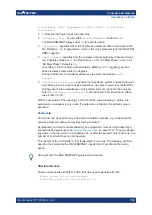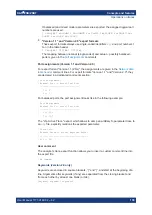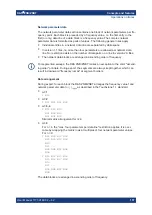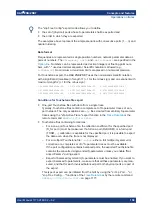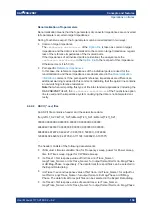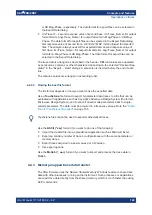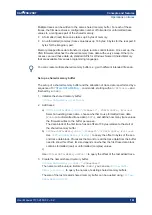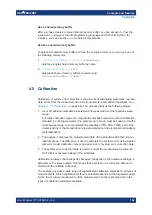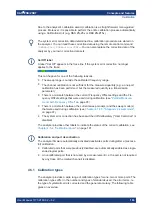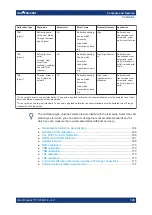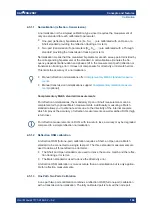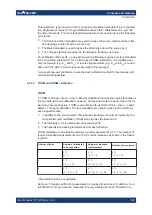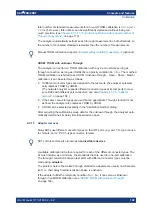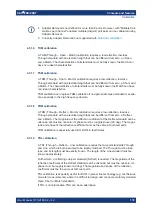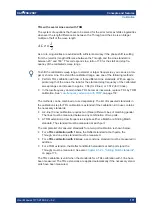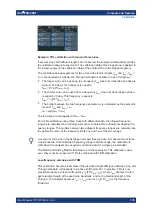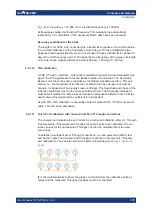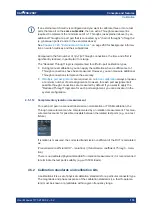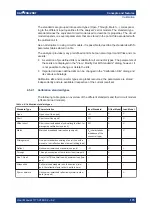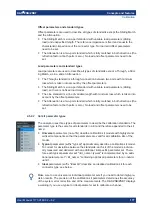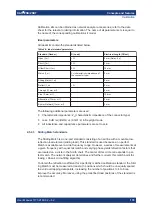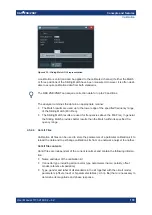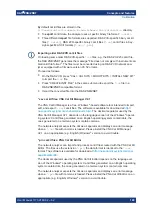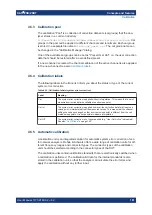
Concepts and features
R&S
®
ZNB/ZNBT
166
User Manual 1173.9163.02 ─ 62
4.5.1.1
Normalization (reflection, transmission)
A normalization is the simplest calibration type since it requires the measurement of
only one standard for each calibrated S-parameter:
●
One-port (reflection) S-parameters (S
11
, S
22
, ...) are calibrated with an Open or a
Short standard providing the reflection tracking error term.
●
Two-port (transmission) S-parameters (S
12
, S
21
, ...) are calibrated with a Through
standard providing the transmission tracking error term.
Normalization means that the measured S-parameter at each sweep point is divided by
the corresponding S-parameter of the standard. A normalization eliminates the fre-
quency-dependent attenuation and phase shift in the measurement path (reflection or
transmission tracking error). It does not compensate for directivity or mismatch errors.
This limits the accuracy of a normalization.
●
Manual reflection normalizations offer
Complementary Match standard measure-
●
Manual transmission normalizations support
Complementary isolation measure-
Complementary Match standard measurements
For reflection normalizations, the mandatory Open or Short measurements can be
complemented by optional Match measurements. Additionally, measuring a Match
standard allows you to eliminate errors due to the directivity of the internal couplers,
which improves the accuracy of reflection measurements on well-matched DUTs (high
return loss).
For reflection measurements on DUTs with low return loss, accuracy may be degraded
compared to a simple reflection normalization.
4.5.1.2
Reflection OSM calibration
A reflection OSM (full one-port) calibration requires a Short, an Open and a Match
standard to be connected to a single test port. The three standard measurements are
used to derive all three reflection error terms:
●
The Short and Open standards are used to derive the source match and the reflec-
tion tracking error terms.
●
The Match standard is used to derive the directivity error.
A reflection OSM calibration is more accurate than a normalization but is only applica-
ble for reflection measurements.
4.5.1.3
One Path Two Ports Calibration
A one path two ports calibration combines a reflection OSM (full one-port) calibration
with a transmission normalization. The fully calibrated port is termed the node port.
Calibration


